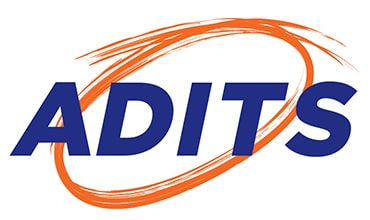Trusted by Industry Leaders
Helping You Ride the Storm
Business disruptions are like weather disturbances. They are a fact – whether caused by natural disasters, software or hardware failure, a power outage, data corruption, security breaches, or user error.
Don’t let your business suffer from an unexpected event. Let us help you prepare.
BOOK FREE CONSULTATION
How an IT Disaster Recovery Plan Can See You Through
A roadmap to disaster recovery is crucial to getting business operations back up and running after a disruptive event. This guide is outlined in a Disaster Recovery Plan (DRP), which is a must if you want to...
- Minimise downtime and ensure business continuity
- Reduce costs and losses
- Protect your assets
- Maintain trust and improve reputation

Ensuring You're Always Covered
Don't wait for a disruption to happen. Your business can and must be ready in case a disaster happens now.
ADITS can help you:
Identify Critical IT Systems
What are the IT systems that are essential for your business to operate?
Assess the Risks
What are the potential threats that could disrupt your IT systems?
Develop an IT Recovery Plan
What are the steps to restoring your IT systems? Who is in charge of what? What technologies will be involved?
Keep Your Plan Up-to-Date
Your plan should be updated as your business grows or changes.
Test Your Plan
Make sure your plan works by testing it regularly.
Effective IT Disaster Recovery Solutions
For your DPR to be optimally effective, it must be…
Comprehensive
Covers all potential disasters that your business could face.
Detailed
Detailed enough to enable you to restore your systems quickly.
Reliable
Should be tested regularly to ensure reliability.
Up-to-date
Reflects changes in your business and has a constant pulse on your business.
Communicated
Communicated to all employees so everyone knows how to respond and the process to follow.
Documented
Easy to understand and processes and are simple to follow.
Flexible
To adapt to changes in your business.
Cost-Effective
Quality-first solutions that work within your budget.

Let's Get You Ready
The truth is, you will never know when a business disruption will happen. The best time to prepare for it was yesterday – but today is a good time for you to take the first step. ADITS will be right there with you to lead the way.
The ADITS
Difference
Navigate the complexities of tech with ease.ADITS makes tech talks straightforward and transparent, giving you clarity and control in every conversation.
Understanding
Beyond Business
We understand all the work you put into your business, that’s why we put in all the effort required to align our work with your company objectives.
Tech Talk,
Made Simple
We want to be sure our clients understand what we’re trying to convey. We try to answer all your questions clearly and address every challenge directly.
Embracing Change,
Leading Innovation
We cannot do our best work if we stop learning and growing. Technology changes quickly and we update ourselves accordingly, so we can also help you stay ahead in the game.

Arrange a Free Consultation
Let ADITS assist you with boosting your organisation's productivity and efficiency via Managed IT, Cyber Security, and essential IT services. Move your business forward faster - talk to us and get a free consultation of your IT today.
Book A Free ConsultationFrequently Asked Questions
What is IT disaster recovery?
Disaster recovery is the process of restoring critical systems, data, and operations after a disruptive event. The purpose of disaster recovery is to minimise downtime and ensure business continuity. While managing your IT and boosting your cyber security are done to prevent some disruptions, a disaster recovery plan needs to be in place because there is no 100% disaster-proof system.
Why is disaster recovery important for a business?
Disaster recovery solutions are crucial for any business because it helps to mitigate the impact of disruptive events (e.g., natural disasters, cyber-attacks, or system failures) and ensure the continuity of critical operations. Disaster recovery can also protect valuable data and assets, keep customer trust, and avoid significant financial losses.
What is an IT Disaster Recovery Plan?
A Disaster Recovery Plan (DRP) is an organisation’s roadmap that outlines the steps and procedures to recover critical systems, data, and operations in the aftermath of a disruptive event. It can enable a business to swiftly recover and resume normal operations. You can learn more downtime reduction strategies in our blog “How to Minimise Downtime and Ensure Business Continuity in a Professional Services Business”.
What are the key components of a disaster recovery plan?
A DRP typically requires:
- A business impact analysis with various disaster scenarios
- A comprehensive risk assessment and analysis to identify potential threats and their potential impact on the business
- Identification and prioritisation of critical assets and resources (based on the business impact analysis) – which are mission-critical, important, and non-essential
- Recovery goals: recovery time objective (RTO), recovery point objectives (RPO), and recovery consistency objective (RCO)
- Regulatory compliance issues
- A clearly defined recovery strategy specifying roles and responsibilities
- Backup and restoration technologies and procedures
- Testing and maintenance protocols
- A communication plan for timely and effective coordination during the recovery process
What is the difference between disaster recovery and business continuity? How are they related?
Disaster recovery focuses on the technical and operational aspects of recovering critical IT infrastructure and systems following a disaster. Business continuity has a broader organisational perspective, ensuring the continuity of essential business functions and minimising overall impact. Disaster recovery is therefore a subset of business continuity.
How do you know that a disaster recovery plan will work?
A disaster recovery plan can be considered effective through regular testing and simulation exercises. Testing can validate a DRP’s functionality, expose any gaps or weaknesses, and ensure that critical systems and data can be successfully restored within a defined RTO. A business must incorporate lessons learned into plan improvements.
At ADITS, we thoroughly scope your needs and work closely with our disaster recovery and business continuity providers to ensure an adequate amount of redundancy and controls are put in place for your business. Talk to us today and let's discuss how a disaster recovery plan can help your business.
How can cloud technology enhance disaster recovery capabilities?
Cloud technology can enhance IT disaster recovery capabilities by providing a scalable, redundant, and secure environment for storing data. Cloud-based disaster recovery solutions can also automate many of the tasks involved in disaster recovery, such as data backup and replication.
At ADITS, we partner with a tier 1 backup provider to ensure our clients have backups offsite and can restore into the cloud if such an event transpires.







